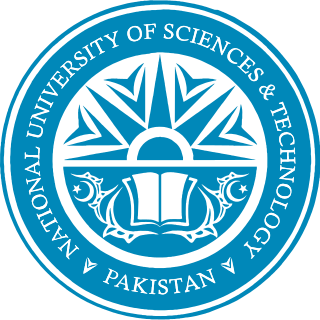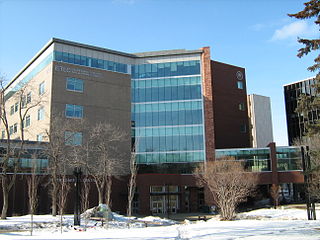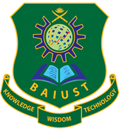
The University of Calgary is a public research university located in Calgary, Alberta, Canada. The University of Calgary started in 1944 as the Calgary branch of the University of Alberta, founded in 1908, prior to being instituted into a separate, autonomous university in 1966. It is composed of 14 faculties and over 85 research institutes and centres. The main campus is located in the northwest quadrant of the city near the Bow River and a smaller south campus is located in the city centre. The main campus houses most of the research facilities and works with provincial and federal research and regulatory agencies, several of which are housed next to the campus such as the Geological Survey of Canada. The main campus covers approximately 200 hectares.

The Pratt School of Engineering is the engineering school of Duke University, a private research university in Durham, North Carolina, United States.

The J. B. Speed School of Engineering is the engineering college of the University of Louisville, a public research university in Louisville, KY.

The National University of Sciences & Technology (NUST) is a Pakistani multi-campus public research university with its main campus in Islamabad, and other campuses in Rawalpindi, Risalpur, Quetta and Karachi. It offers degrees in multiple disciplines e.g. engineering, computer sciences, natural sciences, business studies, humanities, architecture as well as health sciences.
Durland Hall, Rathbone Hall, Fiedler Hall and Engineering Hall are the names of four wings of the main building in the engineering complex on the campus of Kansas State University. The building is set on the old football practice field.
The Engineering Campus is the colloquial name for the portions of campus surrounding the Bardeen Quadrangle and the Beckman Quadrangle at the College of Engineering at the University of Illinois Urbana–Champaign. It is an area of approximately 30 square blocks, roughly bounded by Green Street on the south, Wright Street on the west, University Avenue on the north, and Gregory Street on the east.

The Khajeh Nasir Toosi University of Technology is a public research university in Tehran, Iran. It is named after medieval Persian scholar Khajeh Nasir Toosi. The university is considered one of the most prestigious institutions of higher education in Iran. Acceptance to the university is highly competitive, entrance to undergraduate and graduate programs typically requires scoring among the top 1% of students in the Iranian University Entrance Exam.

The School of Computer Science is an academic department in the Faculty of Science at McGill University in Montreal, Quebec, Canada. The School is the second most funded computer science department in Canada. As of 2024, it has 46 faculty members, 60 Ph.D. students and 100 Master's students.
The University of Santo Tomas Faculty of Engineering, or UST-Eng, is the engineering school of the University of Santo Tomas, the oldest and the largest Catholic university in Manila, Philippines.

The Herbert Wertheim College of Engineering is the largest professional school, the second largest college, and one of the top three research units at the University of Florida. The college was founded in 1910, and in 2015 was named in honor of Herbert Wertheim – a serial inventor, philanthropist and UF Distinguished Alumnus. Located on the university's Gainesville, Florida campus, the college is composed of nine departments, 15 degree programs, and more than 20 centers and institutes. It produces research and graduates in more than a dozen fields of engineering and science including: aerospace, agricultural, biological, biomedical, chemical, civil, coastal, computer, computer science, digital arts, electrical, environmental, industrial, materials, mechanical, nuclear, and systems.

The University of Alberta Faculty of Engineering is one of the largest engineering schools in Canada in terms of size, international impact, and reputation. The faculty is home to 1 Canada Excellence Research Chair, 16 Canada Research Chairs, 13 Natural Sciences and Engineering Research Council chairs, and 5 Foundation Supported Chairs.

Kanagawa Institute of Technology (KAIT) is a private university in Atsugi, Kanagawa Prefecture, Japan.

Birla Institute of Technology & Science, Pilani - Dubai is a private technical research university and a constituent college of Dubai International Academic City. It became the international campus of BITS Pilani in 2000, making it the second campus established. It is the first Indian university to have an overseas campus. The institute is backed by the Aditya Birla Group and is one of the first six institutes to be awarded the Institute of Eminence status in 2018.
SCMS School of Engineering and Technology (SSET), established 2001, is a technical institute on a 27-acre (110,000 m2) campus at Karukutty, Ernakulam District, Kerala, India. It offers bachelor's and master's degree in engineering and computer administration in affiliation with A P J Abdul Kalam Technological University.

Indian Institute of Technology Patna is one of the 23 IITs, located at Bihta near Patna, Bihar (India). It is recognized as an Institute of National Importance by the Government of India. It is one of the second generation IITs established by an Act of the Indian Parliament on 6 August 2008.

The John and Marcia Price College of Engineering at the University of Utah is an academic college of the University of Utah in Salt Lake City, Utah. The college offers undergraduate and graduate degrees in engineering and computer science.

The Faculty of Engineering is one of six faculties at the University of Waterloo in Waterloo, Ontario, Canada. It has 8,698 undergraduate students, 2176 graduate students, 334 faculty and 52,750 alumni making it the largest engineering school in Canada with external research funding from 195 Canadian and international partners exceeding $86.8 million. Ranked among the top 50 engineering schools in the world, the faculty of engineering houses eight academic units and offers 15 bachelor's degree programs in a variety of disciplines.

The Virginia Commonwealth University College of Engineering is a Richmond-based engineering education institution that offers undergraduate and graduate degrees in biomedical engineering, chemical and life science engineering, computer science, electrical and computer engineering, and mechanical and nuclear engineering. Established as the "School of Engineering" in 1996, its name and status was officially changed to the College of Engineering in April 2018. The college's dean, Barbara D. Boyan, cited doubled faculty numbers and an increase in funding as reasoning for the switch from school to college.

Bangladesh Army University of Engineering & Technology (BAUET) is a government and UGC approved private university operated by the Bangladesh Army. It was established in accordance with the Private University Act (PUA) 2010. The university is situated in Qadirabad Cantonment, Natore District, Rajshahi Division, Bangladesh.

Bangladesh Army International University of Science and Technology (BAIUST), a university affiliated with the Bangladesh Army, started its journey on 14th February 2015.

















